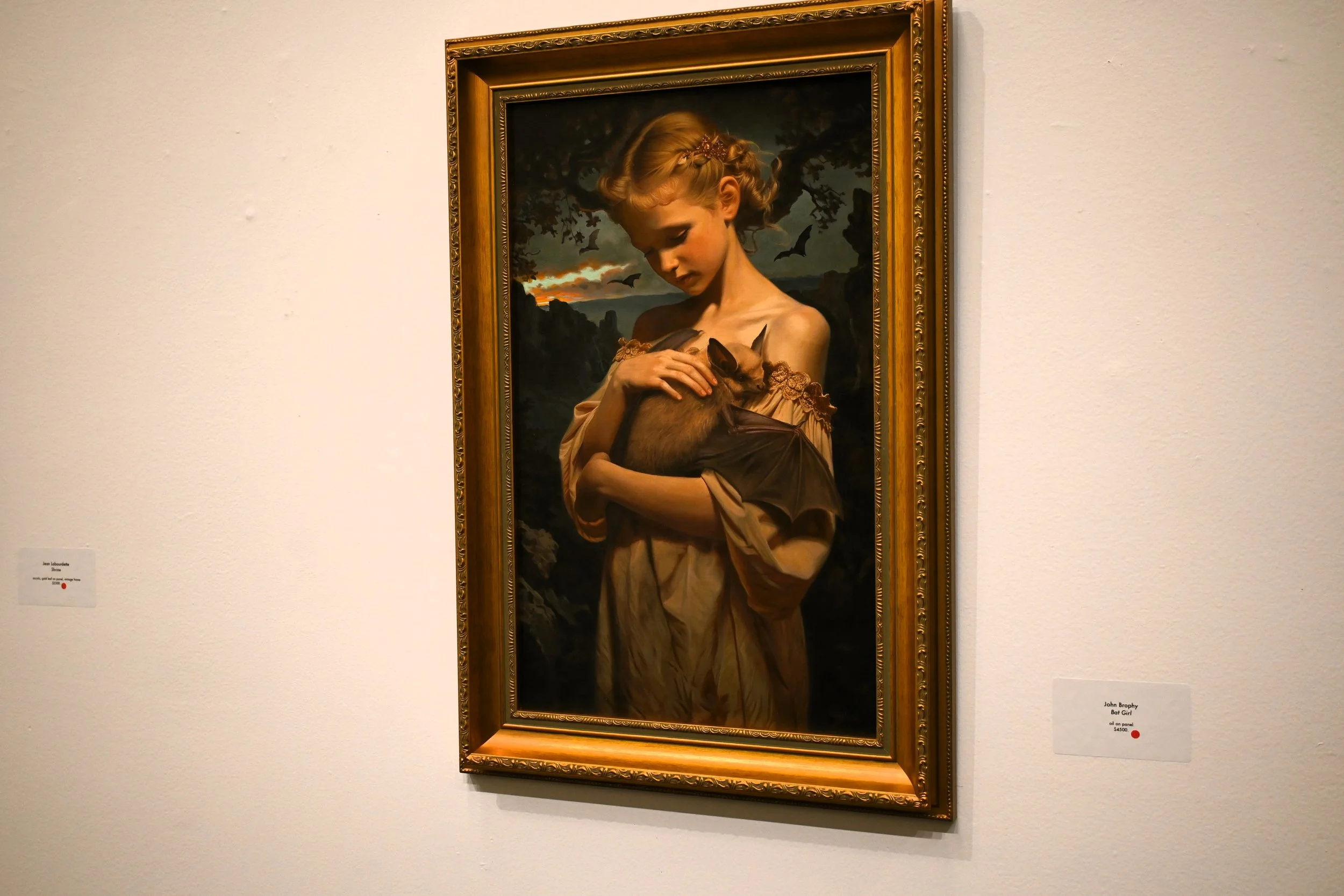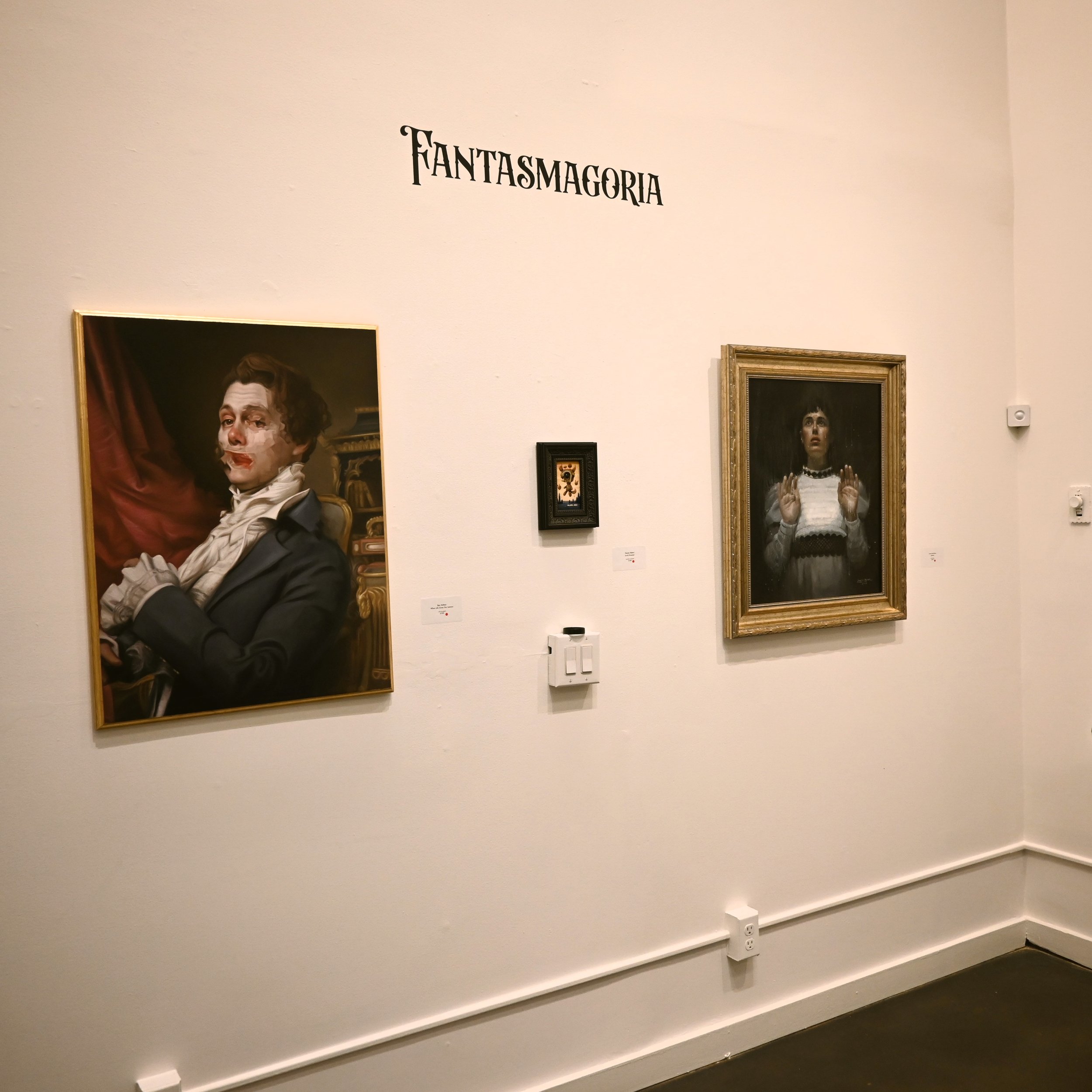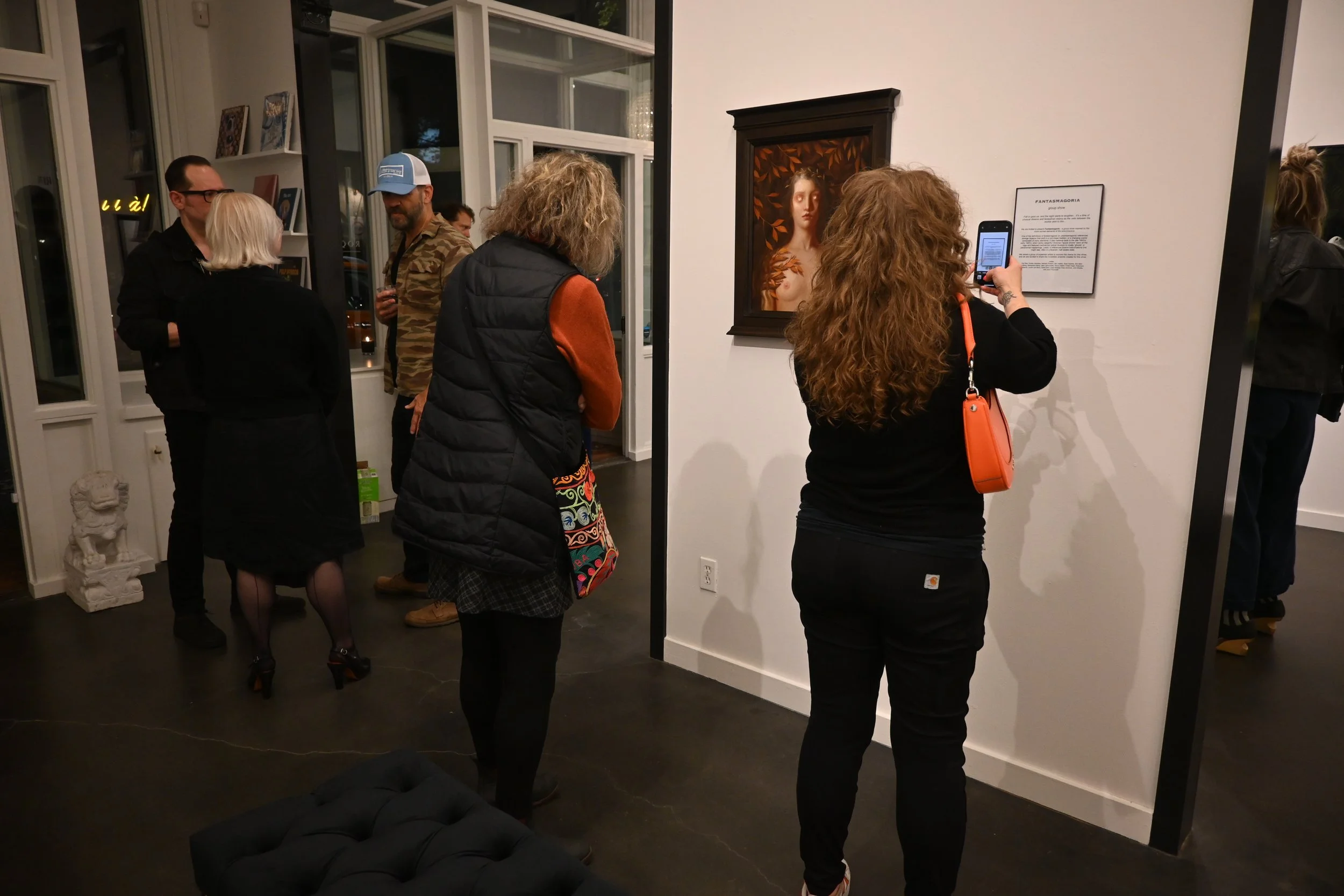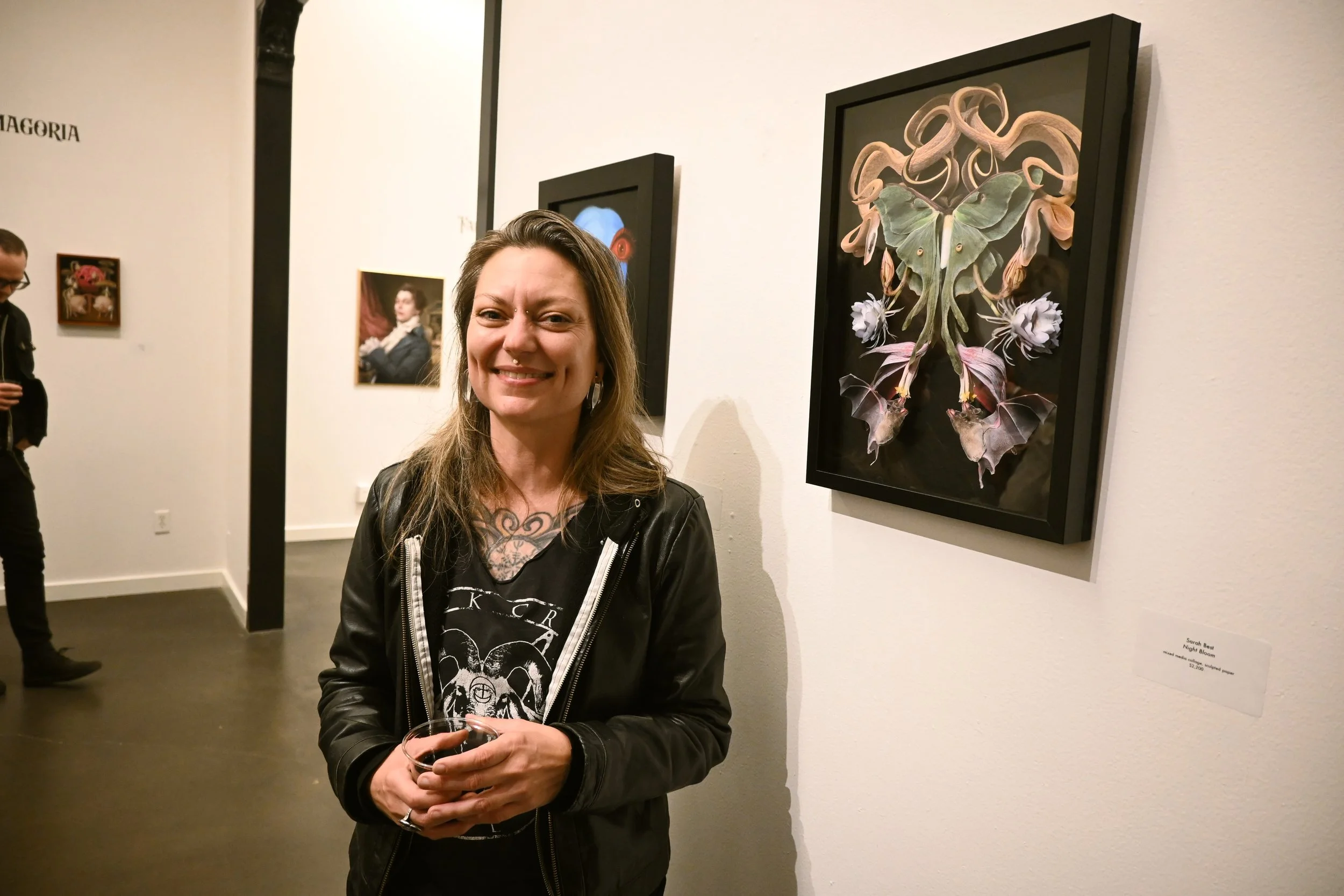Roq La Rue Exhibition - Phantasmagoria
Phantasmagoria: /ˌfanˌtazməˈɡôrēə/ (noun) - a sequence of real or imaginary images, like those seen in a dream.
On a beautiful October evening, when the wind was crisp and orange and brown leaves littered the ground, an unassuming gallery was full of wonders. Like stepping into someone’s dream—or perhaps their nightmare—each piece of art flowed from the creator’s subconscious into the viewer’s own.
Roq La Rue’s new group show, titled Phantasmagoria, opened last weekend, featuring the work of 17 artists from around the world. The exhibit is inspired by the Victorian concept of the “Spook Show,” where people gathered to witness mechanical optical illusions designed to project “ghosts.” It’s the perfect experience for the Halloween season when the veil between this world and the next is at its thinnest. Roq La Rue is known for its surrealist, macabre art, and this show did not disappoint. Featuring large, wall-sized paintings, intricate paper crafts, and a piece that requires a looking glass to fully appreciate, the exhibition showcased motifs of ghosts, animals, and giant mechanical women. It certainly awakened the Jungian nerd inside me— exploring the subconscious was his kink, you know.
When we wake from a dream, the images we experience rarely make sense; we think we need to interpret their meaning. But what if the meaning lies in how the images make us feel? Moving from piece to piece felt like peering into someone else’s dream—a woman whose back is always turned to you, a moth being engulfed by other nocturnal animals, the distorted portrait of a young man, a young girl clutching a giant bat to her chest. Each work carried an intimacy that felt almost intrusive, as if you were overhearing a conversation not meant for you. Yet every painting spoke to our human desire to share our visions, to let others glimpse what we’ve seen, hoping they might understand our deepest emotions—feelings that can’t often be communicated in words.
Some of my favorite pieces included Sarah Best’s Night Bloom, a paper collage of a lunar moth entwined with snakes, bats, and flowers. Naoto Hattori’s Lucid Dreamer is a diminutive 3”x5” piece with a small glass in front for deeper viewing, featuring floating creatures with large eyes and psychedelic colors. Jean Labourdette’s Shrine initially appears unassuming but struck me deeply: a small bird rests inside a gold-leafed frame, like a reliquary, sainted for reasons unknown—perhaps a martyr for some tragic cause. Syd Bee’s Vide Infra (Latin for “to see further”) reflects her signature style of bold colors and beehived women. One figure stares beyond the frame, her furrowed brow matched by a pair of wide-set red eyes that catch the viewer’s gaze. Ryan Heshka’s Black Worm & Pink Sprinkles features two female figures, one with a metal face and the other with bug eyes and hairy legs, which—honestly—is exactly how I looked when I saw the painting. Heshka is best known for his noir female figures, heavily painted in pinks, evoking a sinister 1940s “monster babe” aesthetic. Hannah Flowers’ Autumn’s End greets the viewer with a nude figure, her bright yellow eyes embraced by a sinister, masculine face amidst foliage—a nod to the Green Man mythos, tied to hunting, the life cycle, and sexuality.
The entire show comes together as a sensual, textural, sublime collection. Early philosophers often wrote about the concept of the “sublime” in contrast to “beauty.” Where beauty is pleasing and soft, the sublime is awe-inspiring—sometimes terrifying. Beauty makes us think of gentle, sweet things, but the sublime takes our breath away and lingers in our minds, reappearing behind our eyelids at night. A life filled only with beauty is stunted without the experience of the sublime. The knowledge of things beyond us—of death, ghosts, and mania—sparks the phantasmagoric experience within us all.
Go see Roq La Rue’s new exhibition, open until October 25th. Visit their website at roqlarue.com.








